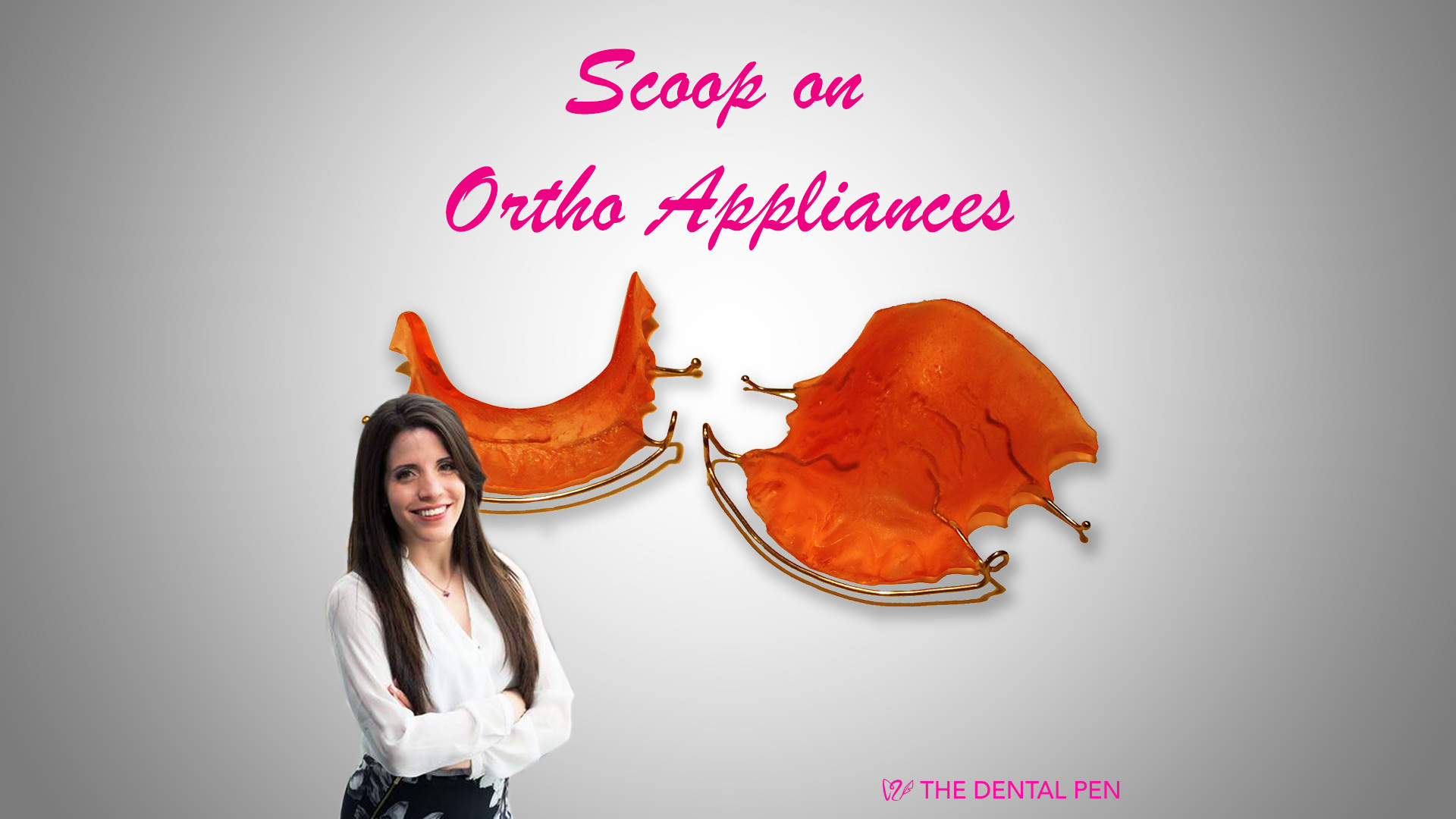Get the Scoop on Ortho Appliances

Either you have heard of retainers from your dentist or heard one of your friends mention it in passing. Something to the tune of, my dog chewed on my retainer or ughh…I always forget to wear my retainer.
What are retainers?
Retainers are by definition used to hold teeth in place. Usually they are used after orthodontic treatment (braces) to "hold in place" your teeth.
They hold the teeth in their new position after straightening them with braces or clear aligners. Usually it is recommended that after your braces come off, a retainer whould be worn 24 hours every day while the bone and gums heal.
After six months to one year, it is recommended that you wear the retainer during night as teeth have a tendency to drift back to their original position.
You should continue to wear the retainer to ensure your teeth stay in place after orthodontic treatment; and most dentists and orthodontists would argue that ideally this could mean you should wear the retainer for the rest of your life. Learn how to clean under your retainers.
Sometimes the word retainer is used to describe a special type of device/appliance that is used to alter the way someone's jaw is growing to better align the teeth. In this context, the term functional appliance or orthopedic appliance is what is commonly used among orthodontists. As a matter of fact, let’s talk about some of the most common appliances used today and specifically why one is used over the other.
This is a great article for anyone looking to get braces or for parents wanting to know more about why their child has to get a certain type of retainer. I want to keep things simple so I have broken down the retainers into three categories depending on the shape and position of the top jaw in relation to the lower jaw.
Top Jaw Ahead of Lower Jaw
HERBST: This type of appliance gets glued to teeth with caps, and it sits in the back of the mouth and on the outside of the back teeth. Because it gets glued to the back teeth it is meant to stay in the mouth 24/7 and is usually worn for at least 6 months until results are obtained. It helps to push the lower jaw forward and allows the muscles to adapt to the new jaw position. It can feel bulky around the cheeks and make them sore. It is best used on pre-teens and teenagers around the time of their growth spurt when the jaw grows the most.
FORSUS: This device is similar to the Herbst in that it allows the lower jaw and muscles to grow more forward. Compared to the Herbst, the Forsus is considered to be less bulky with no caps glued to the teeth. It connects to the wires directly, however, it can feel bulky on the cheeks and lead to irritation. Just like the Herbst, this appliance should be worn for at least 6 months, during which time it is not removed from the mouth, until the jaws are properly aligned.
HEADGEAR: The headgear is one of the most popularized appliances especially with the depiction of many TV characters using it, like Darla in Disney's Finding Nemo. The headgear prevents the top jaw from growing too much to let the lower jaw grow and "catch up" with the top jaw. It can also be used to move teeth or prevent them from moving when they shouldn't. It can be strapped around the neck, to the top of the head or both. The type of strap used depends on how the jaws are misaligned. It works best when worn for about 14-16 hours per day for at least a few months so that it can push on the top jaw. It Is bulky to wear and puts pressure on the face, however it works well to align the jaws.
Top Jaw not Wide Enough
PALATAL EXPANDER: This device helps to make the top jaw grow mainly by pushing the teeth out to the sides. The bone on the top of your mouth also responds by opening a suture that runs through the middle of the top of your mouth. When results occur, a space between the top front teeth will form and will be closed during the orthodontic treatment. There is a screw within it that gets turned to widen the appliance over time. If you've ever had one of these in your mouth you may be very familiar with "cranking" this with a key. The instructions for turning the key varies per patient and it can range from daily to weekly. It can be made of metal or a combination of metal and plastic. This can be glued to the teeth or used as an appliance that can be taken out. It is usually worn for a few months, and as needed until the bone in the top of mouth heals and stabilizes.
Lower jaw ahead of Upper Jaw
FACEMASK (aka reverse-pull headgear): Sometimesthe bottom jaw can stick out more than the top jaw. This can happen in two ways: the bottom jaw grows more than the top jaw, or the top jaw does not grow enough compared to a normal lower jaw. Unfortunately, for a lower jaw that grows too much, the best option is often to let it grow and then once the patient stops growing, to correct it with surgery. In the case of the top jaw not growing, an appliance called the facemask may be used. This device is worn with a bow that rests on the forehead and chin and is connected to the teeth with rubber bands. It works to pull on the top jaw to have it grow more forward. Because it helps to change the way the top jaw grows this type of appliance is often recommended in patients between the ages of 8-10 years old. It is usually worn for months until results that are needed occur.
References
- Cozza, P, Baccetti, T, Franchi, L, et al.: Mandibular changes produced by functional appliances in Class II malocclusion: a systematic review. Am J Orthod Dentofac Orthop. 129 , 2006, 599.e1–599.e12.
- McNamara, JA, Baccetti, T, Franchi, L, et al.: Rapid maxillary expansion followed by fixed appliances: a long-term evaluation of changes in arch dimensions. Angle Orthod. 73 , 2003, 344–353.
- Pancherz, H: The effects, limitations, and long-term dentofacial adaptations to treatment with the Herbst appliance. Semin Orthod. 3 , 1997, 232–243.
- Westwood, PV, McNamara, JA Jr., Baccetti, T, et al.: Long-term effects of Class III treatment with rapid maxillary expansion and facemask therapy followed by fixed appliances. Am J Orthod Dentofac Orthop. 123 , 2003, 306–320
- Proffit, William, Henry Fields, David Sarver. Contemporary Orthodontics, 5th Edition. Chapter 13. Mosby, 042012. VitalBook file.
- Wells, AP, Sarver, DM, Proffit, WR: Long-term efficacy of reverse pull headgear therapy. Angle Orthod. 76 , 2006, 915–922.
- Westwood, PV, McNamara, JA Jr., Baccetti, T, et al.: Long-term effects of Class III treatment with rapid maxillary expansion and facemask therapy followed by fixed appliances. Am J Orthod Dentofac Orthop. 123 , 2003, 306–320








